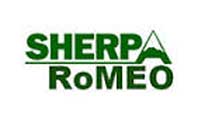VUT DigiResearch
Digiresearch is the VUT electronic open access archive. Its purpose is to collect, distribute and preserve the research performed by the VUT Research community
Slide 1 of 11 

Slide 2 of 11 

Slide 3 of 11 

Slide 4 of 11 

Slide 5 of 11 

Slide 6 of 11 

Slide 7 of 11 

Slide 8 of 11 

Slide 9 of 11 

Slide 10 of 11 

Slide 11 of 11 

Communities in DigiResearch
Select a community to browse its collections.
- Inaugural addresses, Presentations etc.
Recent Submissions
Linking inventory management practices to inventory and warehouse performance in the retail industry in Gauteng and KwaZulu-Natal Provinces
(Vaal University of Technology, 2022-11) Jama, Moeketsi; Mafini, C., Prof.; Loury Okoumba, W. V., Dr.
The application of inventory management practices to improve inventory and warehouse performance is a critical concept in supply chain management. These activities are fundamental in contributing to the value creation of firms' supply networks. The present study investigated the link between inventory management practices, inventory performance and warehouse performance in the retail industry in Gauteng and KwaZulu Natal provinces. The study used a quantitative approach based on a combination of correlation and survey design methods to examine the identified relationships.
A total of 203 supply chain professionals selected from retail outlets in the Gauteng and KwaZulu Natal provinces participated in the survey. The collected data were analysed using the combination of Statistical Package for Social Sciences and the SMART PLS software. Major data analysis techniques employed in the study included descriptive statistics, Exploratory Factor Analysis and Structural Equation Modelling.
The results show that the three inventory management practices: inventory investment, inventory control and ABC analysis, positively influence inventory performance. Two practices: inventory turnover optimisation and shrinkage prevention were statistically insignificant. Additionally, Inventory performance positively influenced wareho use performance.
Theoretically, the study provides a comprehensive analysis and contributes to the literature on inventory and warehouse management in the retail industry in South Africa. Practically, the study facilitates more informed inventory and warehouse management problem diagnostics and decision-making by managers and supply chain professionals in the retail industry.
The influence of generation Y students' perceptions of brand communication, service quality and brand satisfaction on brand loyalty in technical and vocational education training colleges in Gauteng
(Vaal University of Technology, 2022-03-03) Ramuthivheli, Itani Listen; Dondolo, H. B., Prof.; Sharp, K. L., Dr.
Due to the rapidly evolving and dynamic nature of the South African higher education sector, it is critical that institutions communicate their brands to stakeholders to enhance their perception of the institution as a quality service provider. Despite this, little attention has been paid to the influence of brand communication, brand satisfaction and service quality on brand loyalty in higher education, particularly in technical and vocational education and training (TVET). Research has demonstrated a positive relationship between brand communication, service quality, brand satisfaction and brand loyalty in the service sector; however, it is unknown whether such a relationship exists in the South African TVET sector. It is essential to investigate how Generation Y students perceive brand communication, brand satisfaction and service quality in the TVET sector in Gauteng.
Five TVET colleges were used as a convenience sample to recruit 500 students. In each college, students were given a self-administered questionnaire to complete during class time. The data was analysed using various statistical methods, including exploratory factor analysis, descriptive statistical analysis, correlation analysis and structural equation modelling.
The results of the study show that service quality and brand satisfaction have a strong positive influence on brand loyalty. However, the structural model results indicate that this study does not support a relationship between brand communication and brand loyalty. However, there was a significant influence of service quality on brand loyalty towards TVET colleges. In other words, students who have had positive experiences in contact with vocational colleges and are generally satisfied with the services they provide, will undoubtedly develop loyal inclinations towards them. The study also shows that brand loyalty is positively related to brand satisfaction.
This study contributes to the body of knowledge by empirically testing a model of the factors influencing brand loyalty among Generation Y students in TVET colleges. The study shows that brand communication, service quality and customer satisfaction are important factors that influence brand loyalty.
Removal of Pb(II), Cu(II), Cd(II), Cr(VI), methylene blue dye (MB) and inhibition of bacteria growth using modified fennel seeds from aqueous solutions
(Vaal University of Technology, 2022) Mabungela, Ntandokazi; Naidoo, E. B., Prof.; Mtunzi, F., Prof.; Shooto, N. D., Dr.
Water contamination with pollutants like toxic heavy metals, dyes and pathogens is currently a global problem. Toxic heavy metals and dyes are not degradable and persist in environment, while pathogens are responsible for waterborne disease problem. Therefore, it is crucial to remove these pollutants from wastewater.
Hence, this work reports mono, binary and ternary adsorption of copper-Cu(II), cadmium-
Cd(II), lead-Pb(II), chromium-Cr(VI), methylene blue dye-MB and antimicrobial studies
against Escherichia coli (E. Coli) and Staphylococcus aureus (S. aureus) and the resultant
activated carbon (AC) was treated with potassium permanganate (KMNO4) from aqueous
solution by pristine and modified fennel seeds. Pristine fennel seeds (PFS) were modified with acidic solution of hydrochloric acid (HCl), nitric acid (HNO3), sulphuric acid (H2SO4),
phosphoric acid (H3PO4) and alkaline solutions of sodium hydroxide (NaOH) and calcium
hydroxide (Ca(OH)2). PFS were also carbonized at different temperature of 500, 600 and 700 ℃ and treated AC obtained with potassium permanganate (KMNO4). Lastly, fennel seeds were incorporated with iron(III) oxide nanoparticles (Fe2O3 NP), iron(III)-1,2,3,4-tetracarboxylic acid (Fe-TCA) and binary nanoparticles of CuO-ZnO in a ratio of 1:2 & 2:1.
Fennel based adsorbents were characterized using Scanning Electron Microscope with Energy Dispersive Spectroscopy- (SEM-EDS), Fourier Transform Infrared (FTIR), X-Ray Diffraction (XRD), Ultraviolet-Visible Spectroscopy (UV-Vis), Transmission Electron Microscope (TEM), Thermogravimetric Analyser (TGA) and Brunauer-Emmett-Teller (BET). The SEM results showed that the surface morphology of the fennel based adsorbents became more porous with cavities compared to PFS. The FTIR results revealed that the adsorbents surface had hydroxide (-OH), carbonyl (-C=O) and carboxyl (-COOH) functional groups. XRD results showed a diffraction peaks around 19 ⁰ and 23 ° which are attributed to the presence of cellulose. TEM images of the composites indicated deposits of nanoparticles on the surface of fennel seeds. TGA results showed a weight loss around 205-556 ℃ for PFS and 205-507 ℃ for composites and that was due to breakdown of lignocellulosic material in fennel seeds. The physicochemical characteristics such as cation exchange capacity (CEC) and Brunauer, Emmett and Teller (BET) surface area were enhanced after impregnation when compared with PFS.
The adsorption of Cr(VI) and growth inhibition of Escherichia coli and Staphylococcus aureus on binary nanoparticles of CuO-ZnO were investigated. The binary CuO-ZnO nanoparticles were prepared through co-precipitation method. The highest adsorption capacity recorded at pH 2 and 308 K were 75.96 and 84.77 mg/g for FS/CuO-ZnO[1:2] and FS/CuO-ZnO[2:1], respectively. The antibacterial assays indicated that the materials are effective in preventing the growth of microbial growth.
Removal and photo-degradation of methylene blue dye from aqueous solution using FS-NP
and FS-TCA composites were examined. The maximum adsorption capacity recorded for PFS was 13.21 mg/g while for FS-NP and FS-TCA was 32.84 and 42.89 mg/g, respectively. PFS showed no activity for photocatalytic degradation properties while PF-NP and PF-TCA
recorded 58.97 and 48.62 % efficiencies, respectively.
The ternary removal of metal ions of copper Cu(II), lead Pb(II), and methylene blue (MB) dye on pure and acid treated fennel seeds biomaterials from aqueous solution by batch adsorption was investigated. Pure fennel seeds were labelled (PFS), nitric and sulphuric treated seeds were labelled (NAFS) and (SAFS) respectively. Adsorption data showed that all biomaterials had a higher affinity for MB dye more than Pb(II) and Cu(II) metal ions. The maximum adsorption capacities onto PFS were 6.834, 4.179 and 2.902 mg/g; NAFS 15.28, 14.44 and 4.475 mg/g; while for SAFS 19.81, 18.79 and 6.707 mg/g respective for MB dye, Pb(II) and Cu(II) ions.
Binary adsorption of Copper (Cu(II)) and Chromium (Cr(VI)) from aqueous solution using
activated carbon-AC and AC functionalized with KMnO4 derived from fennel seeds was
examined. Activated carbon-AC from fennel seeds was obtained at different temperatures of 500, 600 and 700 °C and the results were named FS-500, FS-600 and FS-700. Thereafter, each sample was chemically treated with KMnO4 solution to obtain KMFS-500, KMFS-600 and KMFS-700. The results showed that the KMFS-700 and FS-700 adsorbed more than KMFS- 600, KMFS-500, FS-600 and FS-500 for both Cu(II) and Cr(VI) metals. The maximum adsorption capacity on FS-700 was 19.886 mg/g and 8.510 mg/g for Cu(II) and Cr(VI) whilst on FS-600 were 15, 423mg/g and 1.202 mg/g and on FS-500 were 16. 921mg/g and 1.722mg/g, respectively. The maximum adsorption capacity on KMFS-700 was 19.786 mg/g and 10.572 mg/g for Cu(II) and Cr(VI) whereas on KMFS-600 were 15, 735mg/g and 8.109 mg/g and on KMFS-500 were 17. 648 mg/g and 3.479mg/g, respectively.
Binary adsorption of toxic metal ions of Cu(II) and Pb(II) from aqueous solution by pristine
and modified fennel seeds was studied. Pristine fennel seeds (PFS) were chemically treated with acidic and alkaline solutions to develop modified adsorbents designated ATFS and BTFS respectively. The maximum uptake of Cu(II) and Pb(II) on PFS was 3.345 and 11.524 mg/g. While for ATFS 3.78 and 13.07 mg/g, and BTFS 8.143 and 14.85 mg/g, respectively
Simultaneous removal of copper Cu(II), cadmium Cd(II), and methylene blue dye (MB) from
an aqueous solution using PFS and modified fennel seeds was investigated. The pristine fennel seeds (PFS) were chemically treated with phosphoric acid (H3PO4) and calcium hydroxide (Ca(OH)2) solutions to produce H3FS and CaFS, respectively. The maximum adsorption capacity for Cu(II) by PFS, H3FS and CaFS was 7.208, 5.504, and 5.791 mg/g, respectively. For Cd (II) by PFS, H3FS and CaFS, it was 2.274, 5.021 and 12.3 mg/g, respectively. The maximum adsorption capacity of MB by PFS, H3FS and CaFS was 11.114, 4.071 and 18.468 mg/g. This thesis is written in an artile format.
Nickel and Zinc sulfide nanoparticles and thin films prepared from substituted Thiourea based complexes
(Vaal University of Technology, 2022-11) Jawore, Abera; Moloto, M. J., Prof.; Nate, Z., Dr.; Xaba, T., Prof.
Nanomaterials have attracted a great attention in this generation. Nanotechnology is currently one of the most advancing technologies utilized in many fields such as in semiconductors, solar cells medicine, agriculture, photovoltaic cell, sensors, and electroluminescent. Various methods have been employed to synthesize metal sulfide nanomaterials, however, many of the present methods use toxic and expensive starting materials which bring the problems into the society. The advancement of nanotechnology makes life better and brings about new inventions that can solve many problems in our daily lives. Thin films also have many benefits in our days, such as solar cell semiconductors, minimizing environmental pollution by replacing fuel gas. The combination of nanomaterials and thin films are core of civilization, green chemistry, and energy source.
This study aimed to investigate the effect of different parameters such as reaction temperature,
concentration of precursor, and reaction time on the physical properties of zinc sulfide (ZnS) and nickel sulfide (NiS) nanoparticles. The nanoparticles were synthesized from (Z)-2-(pyrrolidin-2- ylidene) thiourea zinc (II) complex and (Z)-2-(pyrrolidin-2-ylidene) thiourea nickel(II) complex using the hydrothermal method. The synthesized nanoparticles were capped using hexadecylamine (HDA) and trioctylphosphine oxide (TOPO). The synthesized nanoparticles were characterized using various techniques such as transmission electron microscopy (TEM), X-ray diffraction (XRD), UV-Vis absorption spectroscopy, and photoluminescence spectroscopy. The TEM images of the HDA capped zinc sulfide nanoparticles synthesized from 0.5 mg of the precursor showed quite agglomerated, rod-like structures, small and size particles with an average particle size of 4.46 nm. The HDA capped zinc sulfide nanoparticles synthesized from 1 mg of precursors showed polydispersity small spherical and agglomerated particles. The TEM images of TOPO capped zinc sulfide nanoparticles synthesized from 0.5 mg of the precursor showed small spherical sized particles with an average particle size of 2.16 nm and 2.86 nm. It was noted that the size of the particles increases when the concentration of the increases. The UV-Vis spectra of the HDA capped ZnS nanoparticles revealed two narrow absorption peaks at 304 nm and 307 nm, while the TOPO capped ZnS nanoparticles had an absorption peak of 301 nm. The photoluminescence spectra of both capped ZnS nanoparticles revealed two narrow emission peaks at 405 nm and 445 nm, and 409 nm and 433 nm respectively. The XRD patterns of both capped ZnS nanoparticles revealed mainly peaks at 21.2º, 23.3º, 25.4º, 27.1º, and 29.7º corresponding to the (300), (400), (401), (402) and (403) planes of the hexagonal phase. The TEM images of the HDA capped NiS nanoparticles revealed irregular, agglomerated particles in the size range of 6.31 nm to 7.46 nm, while the TOPO capped NiS nanoparticles showed an average particle size of 6.31 nm. The XRD
patterns of the HDA capped NiS nanoparticles exhibited a hexagonal phase, as evidenced by the peaks at 20 º (100), 26.4º (101), 32.6º (102) and 49.2º (104). The TOPO capped NiS nanoparticles showed peaks at 30.22º (111), 32.35º (200), 34.19º (210), 38.96º (211), 44.77º (220), 50.94º (311), and 59.58º (023), which correspond to the nickel sulfide cubic phase. This study provides a better understanding of the synthesis, characterization and properties of ZnS and NiS nanoparticles and thin films.
Preparation of superhydrophobic polyethersulfone/zinc oxide nanocomposites for water treatment
(Vaal University of Technology, 2022) Nombasa, Dumile; Oluwafemi, S. O., Prof.; Nelana, S., Dr.; Klink, M. J., Prof.
Membrane distillation is a water desalination method involving evaporation through a hydrophobic, microporous membrane under a vapour pressure gradient between the porous hydrophobic membrane and separating water vapour from a salty water stream by allowing only water vapour and other volatile molecules to pass through the membrane. Polymer membranes utilized in membrane distillation are reliable, with a low cost and low energy demands, are easy to use, produce ultra-pure water, and achieve complete rejection of ions, cells etc. However, these membranes are prone to fouling, resulting in a short lifespan and high energy demand.
This work addresses the membrane fouling of Polyethersulfone (PES) functionalised with Zinc Oxide (ZnO) nanomaterials using Non-solvent Induced Phase Separation (NIPS) ) to form flat sheet PES/ZnO nanocomposite membranes of 102 to 142 μm thickness and 53.33 to 56.44 porosity(%). First, ZnO NPs and ZnO NRs were synthesized using the sol-gel and hydrothermal methods, respectively. The formation of the ZnO nanomaterials was confirmed through characterization techniques such as Ultraviolet-visible spectroscopy (UV-Vis), Fourier-transform infrared spectroscopy (FTIR), X-ray diffraction spectroscopy, Scanning electron microscope (SEM), Energy dispersive spectroscopy (EDS) and Transmission electron microscope (TEM). The ZnONPs and ZnONRs were then uniformly dispersed into PES polymer blends to fabricate PES/ZnONP and PES/ZnONR nanocomposite membranes. Secondly, the nanocomposite membranes were modified via grafting with low surface energy molecules 1H, 1H, 2H, 2H-perfluorooctyltriethoxysilane (PFTS) and 1H,1H,2H,2H-perfluorodecyltriethoxysilane (PDTS). The functionalisation success of the ZnO nanomaterials embedded in the PES/ZnO nanocomposite membranes and their modification membranes were assessed for improved surface properties and confirmed by FTIR, SEM, EDX and OCA. The highest increase in the water contact angle( WCA) was observed from 57° for the pristine membrane to 116° for PES/ZnONP(1%)/PFDS(5%) and 124° for PES/ZnONR(5%)/PDTS(5%) nanocomposite membranes. This work fabricated a novel near superhydrophobic PES/ZnO nanocomposite membrane with enhanced separation properties for high saline water treatment.





